BenQ XL2720T Gaming Monitor Reviewed
by Chris Heinonen on June 17, 2013 4:35 PM ESTWith TN panels you are of course subject to the problem of poor viewing angles in comparison to other monitor technologies. The problem also accentuates itself on larger displays like the XL2720T, where the viewing angle is larger for your vision, and so the edges start to have color shifts even when you are directly centered on the screen. Even with regular content on the screen, I can notice shifts in contrast and color at the edges of the screen in general use, which I find distracting. I didn’t notice it vertically as much, but the angle isn’t nearly as large as with the horizontal position.
I also found the overall look of the XL2720T to be a bit worse than with other displays I have had in recently. Perhaps it’s the anti-glare coating, but everything looks slightly fuzzy, even the simple black text in this document that I’m typing right now. With the lower resolution I’d expect to see more sharp angles and pixels, but everything looks a bit too smoothed out because of this issue. I have to say that for general use, I can’t imagine living without an IPS monitor at this point.
The BenQ has a lot of preset modes available for calibration, but the best data was obtained with the sRGB mode. Standard was a bit better for grayscale, but color accuracy was better in sRGB making it the overall best choice. Surprisingly, Photo mode was far and away the worst preset on the BenQ when it comes to accuracy, even more than the FPS modes are. Perhaps they meant to call it “Galaxy S3 Photo Mode”, but I’d usually expect a mode for viewing photos to be accurate. So just don’t use it, unless you want a really vivid Instagram filter applied to all your photos on your PC.
The uncalibrated grayscale performance for the BenQ is decent though not outstanding. The average dE2000 is just below 3.0, which is the visible threshold. As you look at the RGB balance you can see there is a distinct blue-green tint to the grayscale, which you can easily see on screen as well. The gamma comes out just above 2.0, well off our 2.2 target, and it isn’t linear at all which will lead to images that are a little dark in the shadows and too washed out in the highlights. The contrast ratio of 706:1 is on the low side, but the gamma issue really leads to a bit of a washed out image.
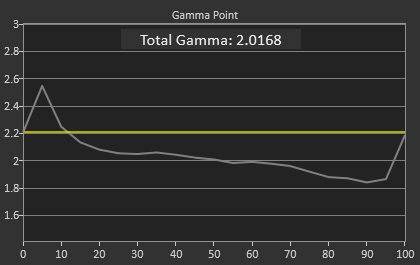
The color points are much better, with a dE2000 of 2.1 and most luminances are pretty close to correct, with all the colors having a dE2000 below 3. The worst issue is the 100% saturation, 100% luminance white that throws the average off a bit, and that will be noticeable as that’s your background white in most applications. Overall you get good numbers for a preset mode.
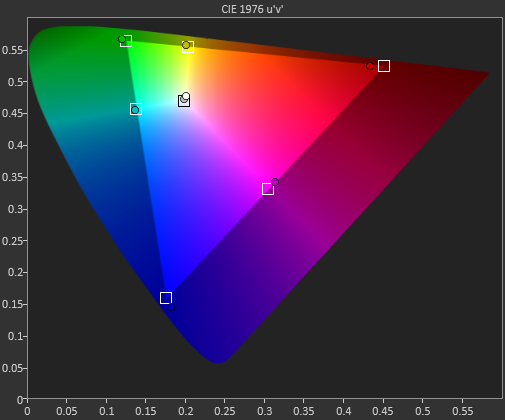
The colorchecker tests look good overall with the exception of two orange shades that are well off their target. Every other color has a color error that is practically invisible, as long as it isn’t right next to a correct sample. The biggest issue is that the luminance levels are too high across the board, and luminance is the most noticeable error in color.
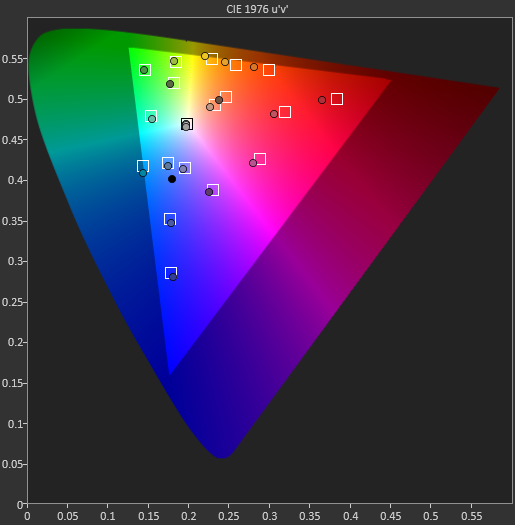
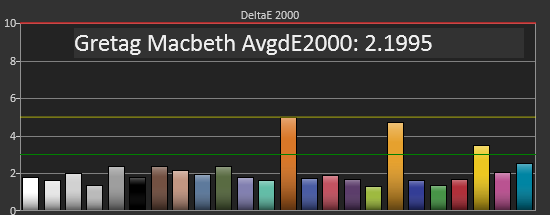

Our saturations data is also very good, showing very uniform errors across the spectrum, and no really large spikes to be heavily concerned with. Overall for a pre-calibrated mode, the sRGB does a good job on the BenQ XL2720T.
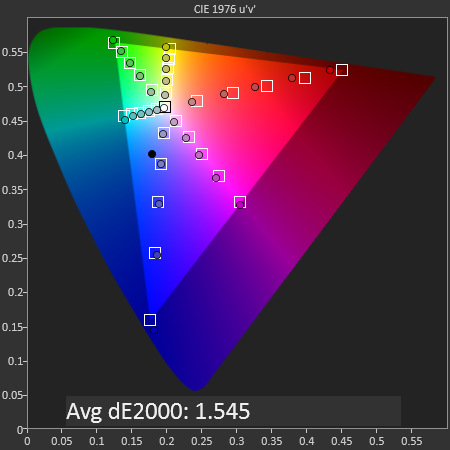
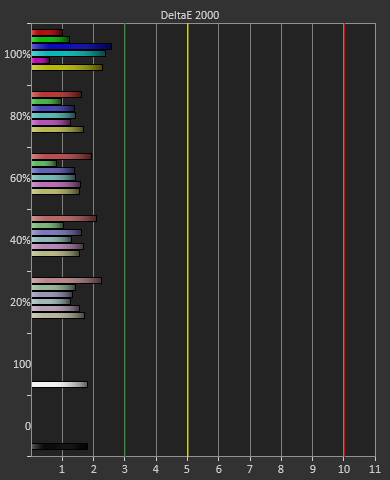
Looking at the gamut, we see just below 71% of the AdobeRGB gamut, which is what sRGB should measure out at.
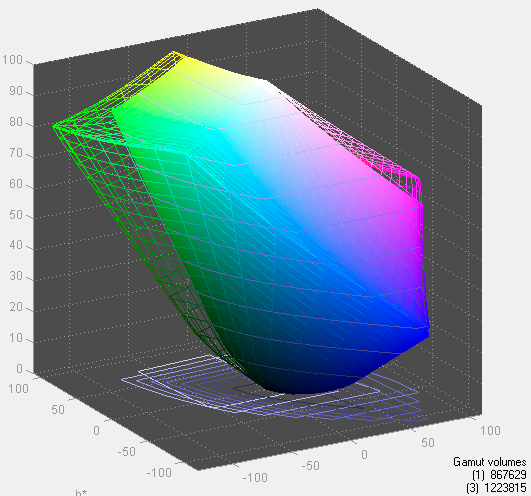
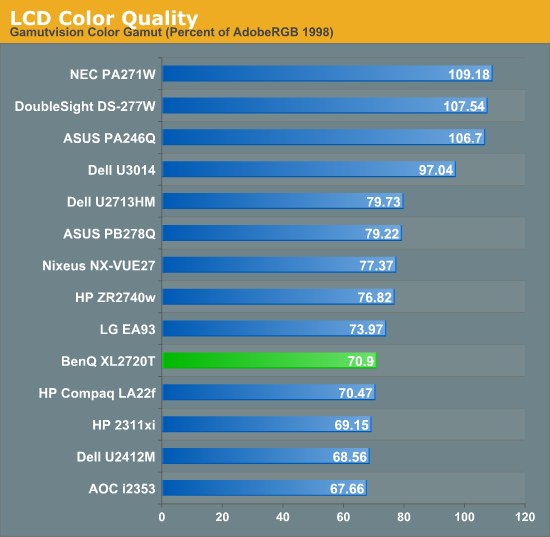









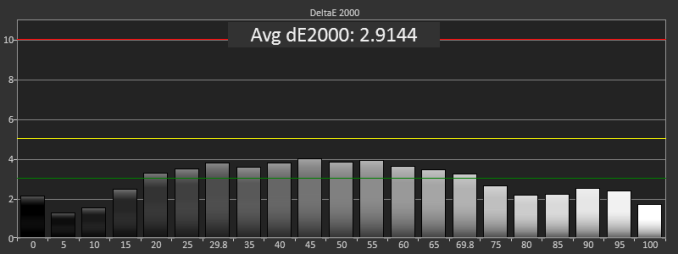










79 Comments
View All Comments
blackoctagon - Friday, June 21, 2013 - link
Thank you for the clarificationDraconian - Tuesday, June 18, 2013 - link
Why do they make these gaming monitors so big? 1080p at 27"? The pixel size is huge.Make a 23" version and I'd be interested in it.
birru - Tuesday, June 18, 2013 - link
They make 24" versions too, the XL2420T and XL2420TX.chizow - Tuesday, June 18, 2013 - link
The original 1080p 120Hz models were 23", too small, especially for 3D. I upgraded to a 27" 1080p and the pixel size is fine, small price to pay for the huge increase in screen size.mdrejhon - Wednesday, June 19, 2013 - link
I just noticed charts being posted for LightBoost measurements.Good for you AT -- much needed tests.
Which drivers did you use? People reported better LightBoost color quality from nVidia 320.18 drivers than older drivers -- so we're curious which driver you tested with.
cheinonen - Wednesday, June 19, 2013 - link
I used the most recent drivers from NVIDIA. I'd have to double-check the version, but I try to keep them up-to-date as much as possible.mdrejhon - Friday, June 28, 2013 - link
Good news. The easy LightBoost system tray just came out.http://www.blurbusters.com/easy-lightboost-toastyx...
-- It works great on surround 120Hz setups;
-- It allows you to turn ON/OFF LightBoost via an easy hotkey.
-- It also allows you to adjust LightBoost percentage settings.
qiplayer - Sunday, November 3, 2013 - link
This is a gaming monitor please review it as that. There are thousands of monitors that are good for else and a few 27 that are good for gaming. If I and others are here it's probably to know about that.qiplayer - Sunday, November 3, 2013 - link
So 1ms response time and 22ms of imput lag ... it appears you are not the only one that has no idea of what performance it should have. To make a comparison 22ms is also a good ping, but ping isn't interferring with the coordination hand-eyes. A good input lag would be less than 10ms.It is relevant and you notice it in game when you turn fast from one side to the other, the image turns later than what you do with the mouse. About expensiveness I own a rig worth about 5-6000$, and I'm looking for 3 120hz screens. Too bad there aren't any 2500x1600 one's. The problem isn't about money but about stuff that works, like a cpu overclocked that it doesn't bottleneck 3titans. And by reading reviews of 10, 1or 2 have sense, for example there are people that test a 1000$gpu on a 1280x720 monitor and all kind of such staff
Going back to the imput lag, my monitor has one of 18 seconds and 60hz. So I'm disappointed because when they go down with pixel responsiveness and double the hz it would only have sense to work much also on the input lag. This is needed when making 2 kills in a second and not wanting to be killed from the 3rd player ;)